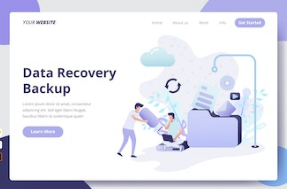In the rapidly evolving landscape of digital operations, the criticality of safeguarding data, applications, and systems from potential losses or disruptions is paramount. The concepts of backup and recovery serve as foundational pillars in the domain of data resilience, ensuring that organizations are equipped to protect, preserve, and restore their digital assets, even in the face of unexpected challenges. This article delves into the key aspects of backup and recovery solutions, expounding on their significance, strategies, and implications for ensuring operational continuity and resilience in today’s digital era.
What is Backup and Recovery?
Backup and recovery solutions encompass a set of strategies and technologies designed to create and maintain copies of data, applications, and system configurations, facilitating the restoration and reconstitution of these assets in the event of data loss, corruption, or system failure. By establishing thorough backup processes and recovery mechanisms, organizations can minimize the impact of disruptions, safeguard critical information, and maintain operational continuity in the face of unforeseen events.
Significance of Backup and Recovery:
The establishment of robust backup and recovery mechanisms is essential for organizations across industries, serving as a safeguard against a spectrum of potential risks, including hardware failures, cyberattacks, human errors, and natural disasters. By ensuring the availability, integrity, and restorability of essential data and systems, backup and recovery solutions fortify organizations against potential losses, enabling them to navigate through challenges and maintain their operational integrity.
Backup Strategies:
Effective backup strategies involve the creation, storage, and maintenance of duplicate copies of data, applications, and system configurations, typically stored in secure, offsite locations. Organizations often implement a combination of full, incremental, and differential backups to ensure that their data is consistently and comprehensively protected against potential threats and adverse scenarios.
Recovery Mechanisms:
The ability to recover and restore critical data and systems with minimal downtime is a pivotal aspect of backup and recovery solutions. Organizations invest in disaster recovery planning, data restoration methodologies, and testing processes to validate the effectiveness of their recovery mechanisms and to ensure that they can swiftly regain access to vital digital assets in the event of data loss or system disruptions.
Implications for Resilience and Continuity:
By upholding effective backup and recovery practices, organizations can reinforce their resilience, ensuring that they are equipped to navigate through unforeseen events and maintain operational continuity. These solutions empower organizations to swiftly recover from disruptions, minimize potential losses, and uphold their commitments to stakeholders, customers, and partners.
Backup and recovery solutions represent a cornerstone of operational resilience and data protection in the digital age. By integrating robust backup strategies and recovery mechanisms, organizations can safeguard their critical assets, mitigate the impacts of potential disruptions, and uphold their operational integrity, positioning themselves for sustained success and continuity in an evolving and unpredictable digital landscape.
